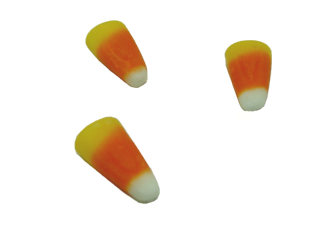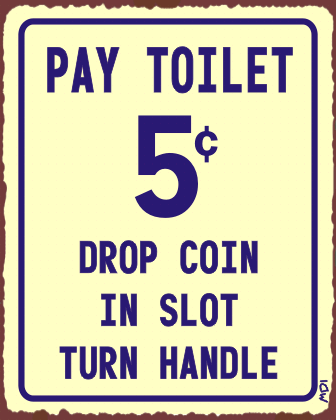“The price of a thing is the worth it will bring.”
I love that quote, but the reality is that “viral” video pricing has been less about worth and more about cost plus.
If anyone should know the “fair market price” of a viral video it should be I — or me (depending on which one is grammatically correct, and I really don’t want to know, because I don’t plan on framing a sentence that way again).
After all, I interact daily with brand marketers, big and digital agencies, and video creators. Yet prices range irrationally, and the market is in desperate need of guidance. This post is a long one because this is a complex and important issue to brands and creators. I really should clean this up, and adapt this for one of the advertising and marketing trade magazines.
Nalts Discloses Fees
Let me disclose my own fee structure and hope others will do the same. I initially was happy with $1,000 per video (for Mentos and some of my early work), but soon discovered my hourly rate computed to less than minimal wage. And I was juggling more work than I could handle with a day job. I also didn’t want to junk my YouTube channel with excessive sponsored videos, which alienating my subscribers (especially since many resent YouTube’s InVid ads, which produce far less income for me than sponsored videos).
Now I’m pricing between $3,000 and $10,000, but there are a few reasons I can price this way:
- I have a decent track record, and fortunately more demand than time.
- I have a steady audience on YouTube so most of my videos will get at least 20-40,000 views.
- I have a marketing background, and provide strategy and a creative brief before diving into the video.
- I try to produce several videos so a brand can amortize the cost (and generally I get some efficiencies out of a series).
- I have gobs of debt (hey, just keeping it real here).
How Marketers & Creators Find Each Other
There are, of course, plenty of video creators who can perhaps do better videos for less money. I have developed a network of specialists that can, for example, do a great score, logo or animation very inexpensively. But I haven’t yet discovered a good “business exchange” site where advertisers and creators can find each other (viral video could use its own eBay, Craig’s List or Match.com). I’ve thought about starting one, but it is labor intensive and not something that automates well without significant volume. And I don’t feel like being the “viral video” middleman or talent scout.
Xlntads (with whom I consult occasionally) is approaching that model because hundreds of creators have registered and sometimes partner via the site (a director and a musician team up for an ad). A brand can generate a variety of videos via Xlntads without hunting down and dealing with individual creators (not to mention multiple contract negotiations). I like that as a marketer, and as a creator I’m happy to work for a smaller fee if I can avoid some of the incredibly time-consuming and frustrating “business development and qualifying” hassle.
Going from Prospect eMail to Payment
My visibility means most of my clients find me, so I’m fortunately not cold calling (yuck). But there’s a huge cost associated with qualifying something and having multiple phone calls and documents, and some of these go nowhere. I probably ignore valid opportunities because I miss an e-mail, or it reminds me of a previous discussion in which I invested time and energy understanding the brand, building a creative brief, proposing video concepts… then the agency or brand inexplicably “went dark.”
More importantly, many video creators have no interest or experience in selling their work, and simply want to create something for a modest profit. Historically, I don’t charge until I make a video, and yet much of my value occurs earlier and I’ve been giving that away naively.
Project or Retainer Video Consulting
As of this post, I’m moving to a flat-fee model where I charge $250 an hour (or a discounted day rate) to: understand the brand’s goals, conduct some informal research of their “space” in online video, build or adapt a creative brief, and present a series of video concepts. This initial fee will help me qualify clients and provide better service initially (as opposed to scrambling together a few weak concepts 10 minutes before a conference call). Then I’ll scope and price videos separately. This seems fair, since much of my value is in the initial phase, and the fee justifies my time and makes me a partner instead of a video production guy desperately pitching a few Nalts videos in hopes that I haven’t wasted my time. If I’m not right for the client’s production (or if I’m swamped) I can refer it to other creators.
As a marketer, I’d maybe prefer to pay upon completed video, but I am accustomed to paying for my agency’s time by the hour (and usually at a rate that far exceeds $250 when you burden it with overhead).
In 2008 (recession or not) companies and agencies will need marketing/video expertise, but can’t justify a full-time employee until this space matures. Do you remember what smart agencies and clients did when paid-search was emerging as a discipline? Rather than hire a firm with overhead or pay a full-time employee, they tapped specialists who were compensated for their objectivity, expertise and time. My career goal is to move from corporate marketing to online-video consulting retainers for a few companies and/or agencies. But don’t tell my boss yet. 🙂
Various Creators. Various Fees.
There are a number of video creators that do work for hire.
- Some are simple and some are complex teams with expensive budgets.
- Many are brilliantly creative but couldn’t market their way out of a paper bag. Others are sound marketing strategists that suggest creative concepts that make you cringe inside (I need to start documenting some of these because they’re so unfunny they’re funny again).
- I’ve known brands that have spent $250,000 on a series of 4 short viral videos (not kidding), and I’ve known brands that have done almost the same thing on a shoestring $5K budget.
As a marketer, I tell people to keep their costs down since there’s no guarantee the video will pop. As a creator, of course, I want to profit from my work and want the same for other amateurs.
If you make online videos, please feel free to pimp yourself below- as long as you provide some information about your pricing.
“Fixed” versus “Variable” Payments
Should a marketer pay for a video, or pay the creator based on its viralicity? I have a strong opinion here, but I need to first explain why I cringe at “per view” payments. A view isn’t a view. Views can be manipulated in various ways – I don’t know how the “viewer robots” work (and don’t really care) but I assume they replicate a view by refreshing a video in intervals using various IP addresses. Most sites are developing safeguards against this, and counting only true views as those that last more than, say, 30 seconds. I’ve notice my view count darts to 200 and then stops for a while before it reflects that actual views. Presumably someone is validating the view count before it’s reflected accurately.
- Any video site can fudge the view counter and it would be hard for a marketer or creator to know otherwise (candidly I suspect some of the second-tier sites are manipulating view counts to make the site look popular for visitors and advertisers).
- “Auto roll” is another way to manipulate views. My YouTube profile page has a feature where the video plays automatically on the unwitting viewer, which gives me the ability to get any video thousands of views pretty quickly.
- Even a real view isn’t always the same as a real view. Why do we pay different CPMs to media properties? Because some are worth more than others. If I do a video highlighting a U.S. hotel chain, it’s going to be worth much more to my sponsor to have that viewed on a travel blog or golfer website than on Break.com by a 14-year-old kid in Russia. It will be years before we can target views by demographics, so we assume some degree of waste.
As a video creator I’d prefer to be paid for my time and creativity, and not be gambling on the video’s popularity to find out if I’ve made $4 an hour or $7. As a marketer I don’t want to inadvertently reward the creator to junk and manipulate views. And even if I “capped” the view incentive, it’s a pain on my budget system to hold a reserve. Try explaining to the folks in finance why you’ve set aside $20,000 in case your video gets popular.
Pay for Seeding
Finally, there are two distinct costs associated with videos. First is the “creative” cost, like producing an advertisement. Second is the “promotion” cost of getting it viewed. While that can involve direct media fees (paying a site to feature a video), this is typically a retainer-based service that involves a person or agency seeding the video and reporting on views. Generally this is a temporary retainer since most of the views will take place in the first 30 days (I’m over simplifying this, but I wouldn’t hire an agency to report on my viral video for six months if each bi-weekly report was changing by .2%). After a few months, you move on. There are a few creators that have mastered this art, and a few agencies that are claiming it but have no idea about how to do it well.
This, like public relations, is a difficult thing to sell. But rest assured that “earned” media (locating a relevant blogger and asking them to post your video) is more targeted and effective than paying to flight crappy preroll ads. My recent Mac Spoof went well past 200K, and we’ll never know that’s attributed to the timliness and humor of the video itself, or the few e-mails I sent to Mac blogs (which took about 5 minutes).
There’s an art and science to video seeding, and it’s often done inappropriately. But it’s a vital step, and I believe this will spawn a cottage industry that eventually gets consumed by big agencies, interactive shops or PR firms.
A lot of information here, and I look forward to reading the comments. I hope this spawns some discussion about this important topic. We’ll set up a forum for it too.
Boy I’m sure glad that’s over with. Me too. Yeah, but you know I learned something today. We thought we could make money on the Internet. But while the Internet is new and exciting for creative people, it hasn’t matured as a distribution mechanism to the extent that one should trade real and immediate opportunities for income for the promise of future online revenue. It will be a few years before digital distribution of media on the Internet can be monetized to an extent that necessitates content producers to forgo their fair value in more traditional media.










